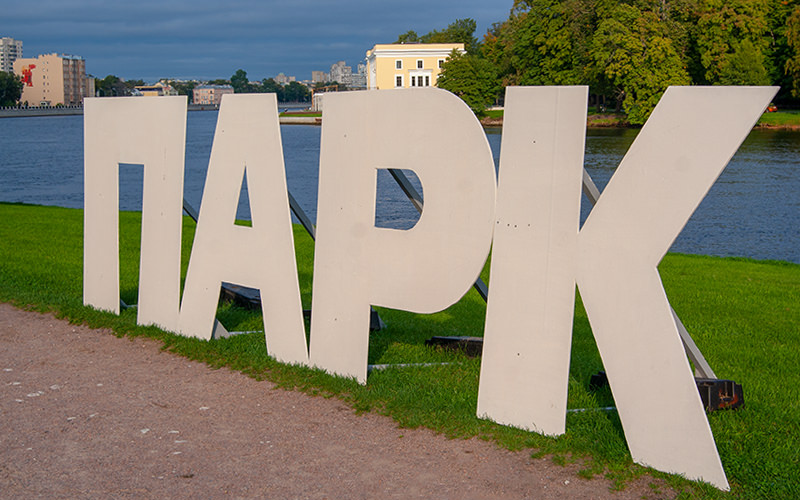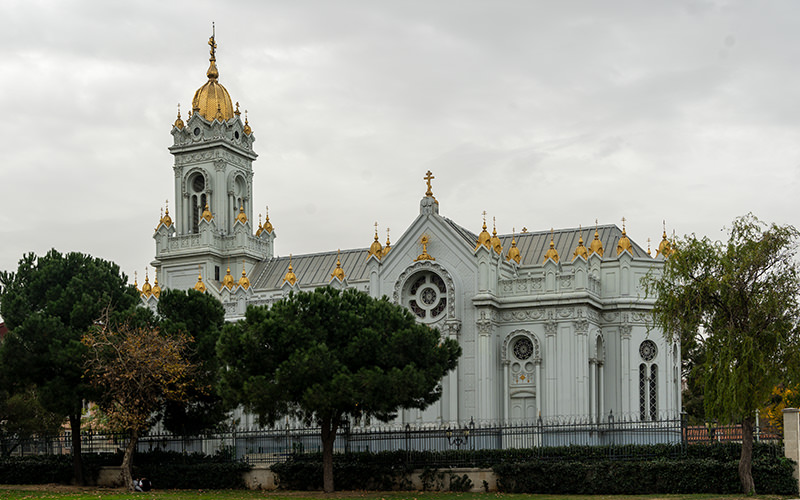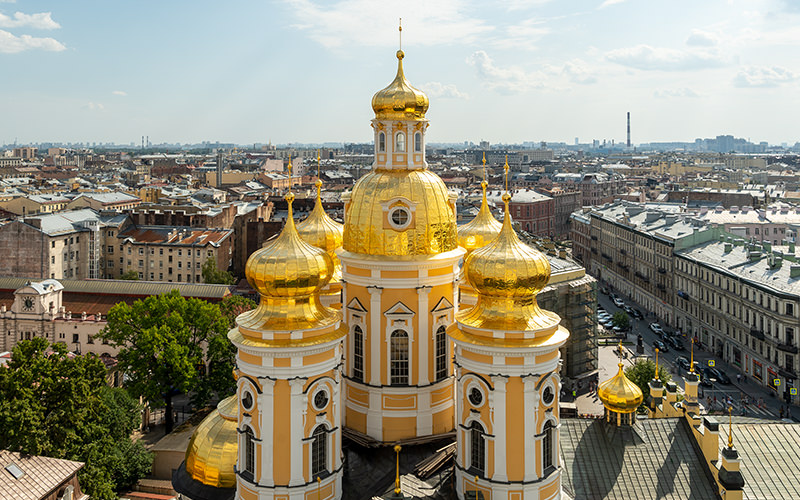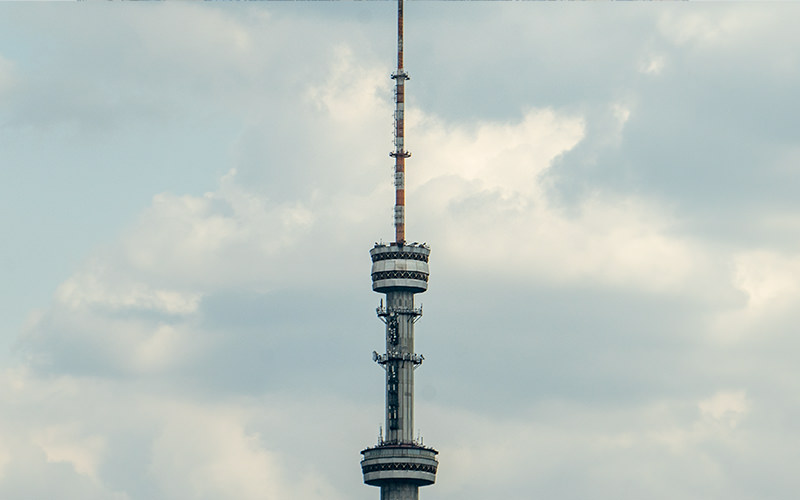While walking around Soviet-era architectural landmarks in Almaty, I suddenly found myself near the Ascension Cathedral. At first, I didn’t plan to write about it — after all, a pre-revolutionary church doesn’t really fit the theme of my route. But the building turned out to be so distinctive and impressive that I decided to devote a separate article to it.
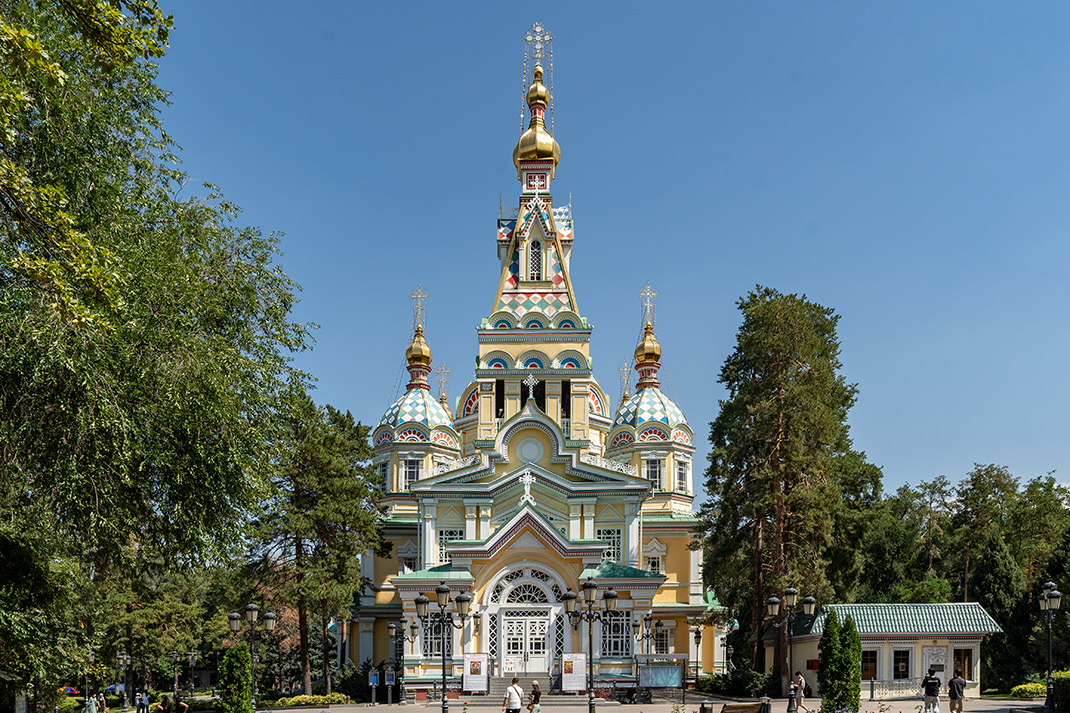
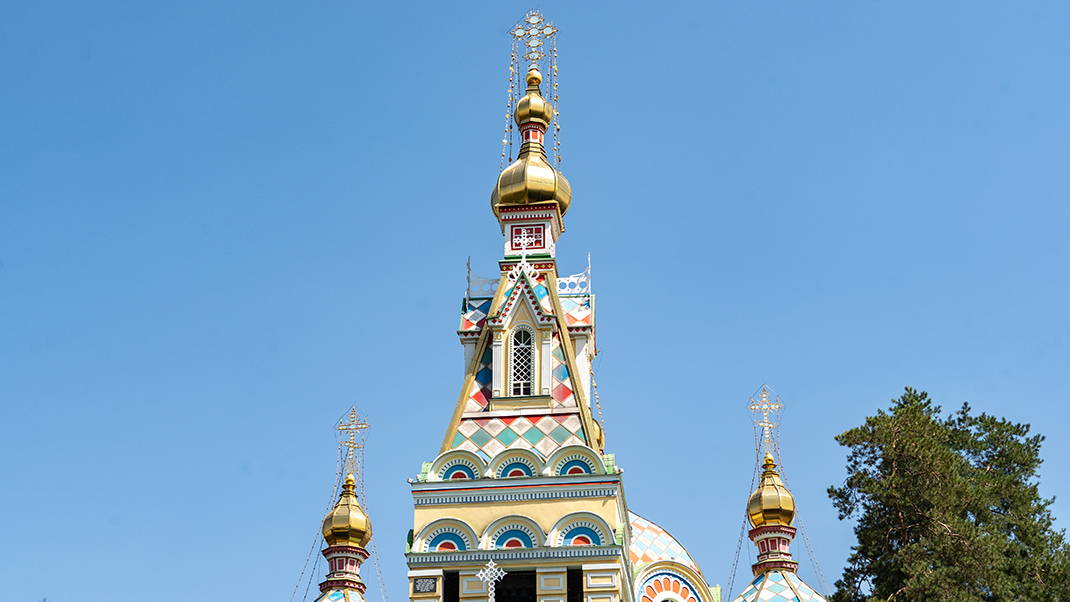
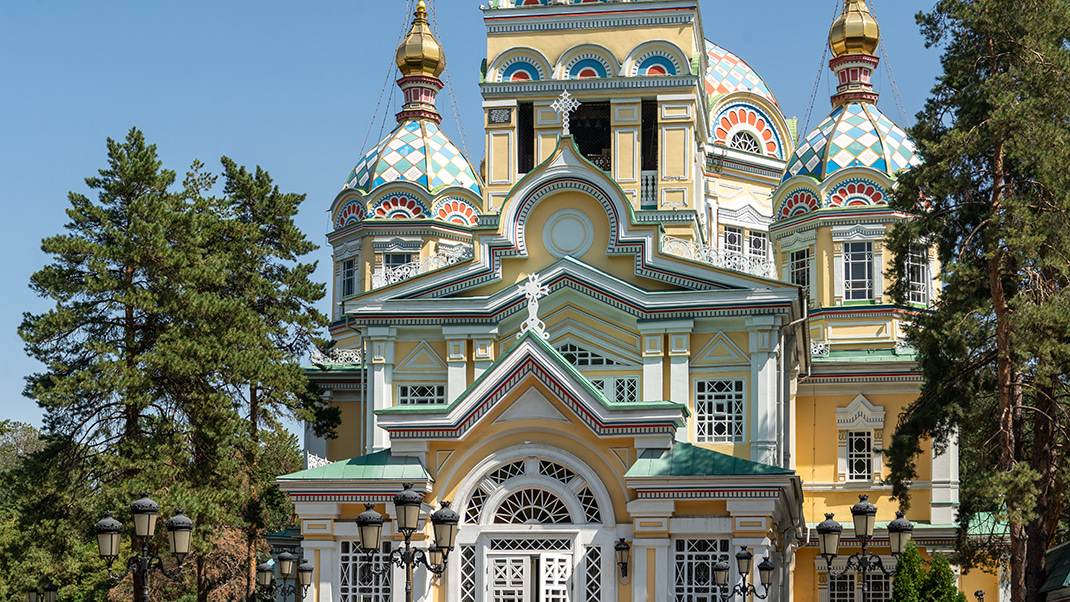
History of the Cathedral
The first design drafts for the building appeared in the 1880s, but the construction was delayed due to a number of circumstances: there wasn’t enough funding, the architect who designed the project passed away, and the city itself was destroyed by an earthquake.
The idea of building the cathedral was revisited at the end of the next decade. In 1898, architects N. P. Naranovich and K. A. Borisoglebsky presented a new design. Later, the project was revised and completed by engineer A. P. Zenkov, who is often mentioned in some sources as the sole author of the construction. The cathedral was built between 1904 and 1907.
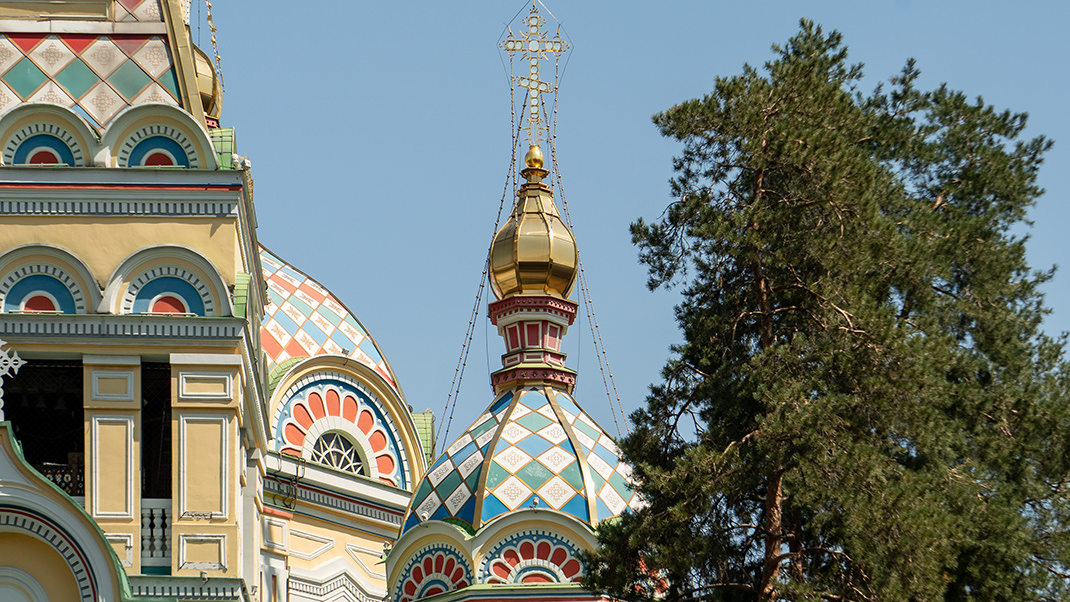
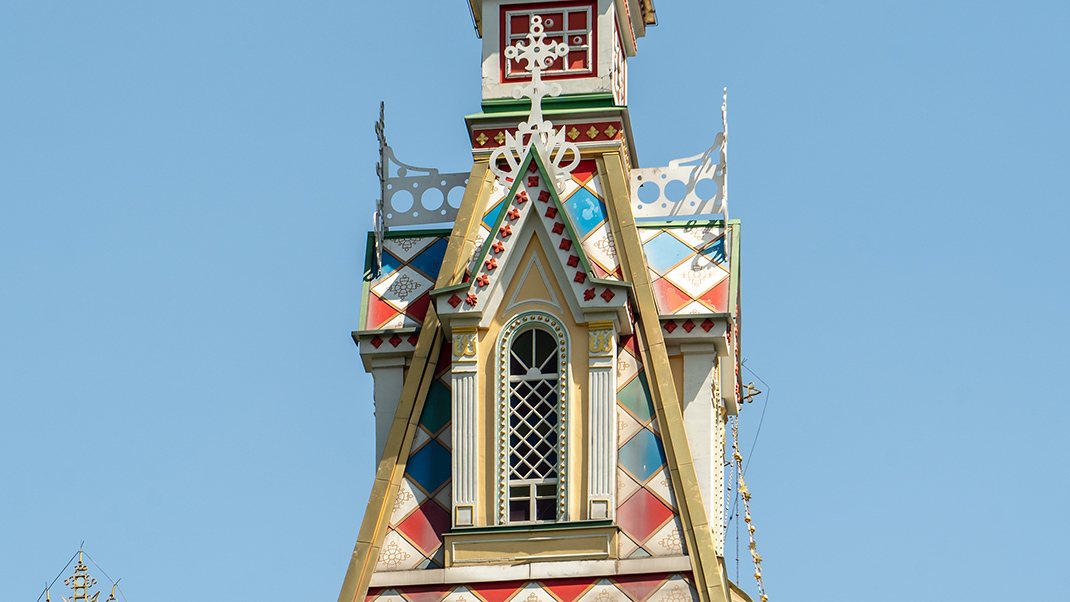
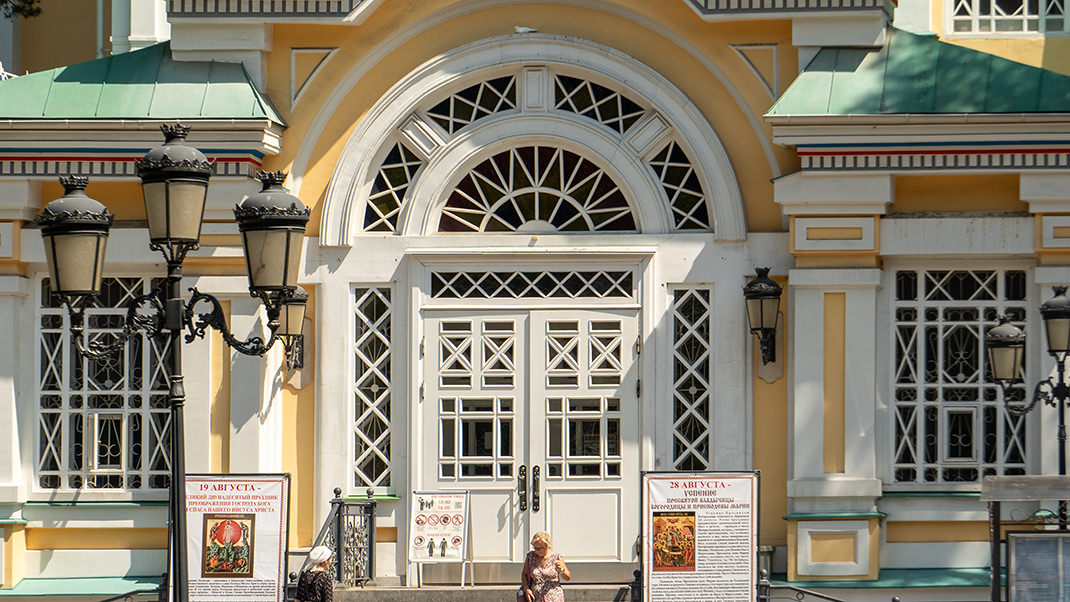
The earthquake I mentioned earlier inevitably influenced the construction process. Studies conducted after the disaster showed that stone buildings were much more damaged than wooden ones. This likely affected the choice of material for the new cathedral — its walls were made of wood. To increase earthquake resistance, metal parts were also used. The structure proved its durability: it survived a 9-magnitude earthquake in 1911 without damage.
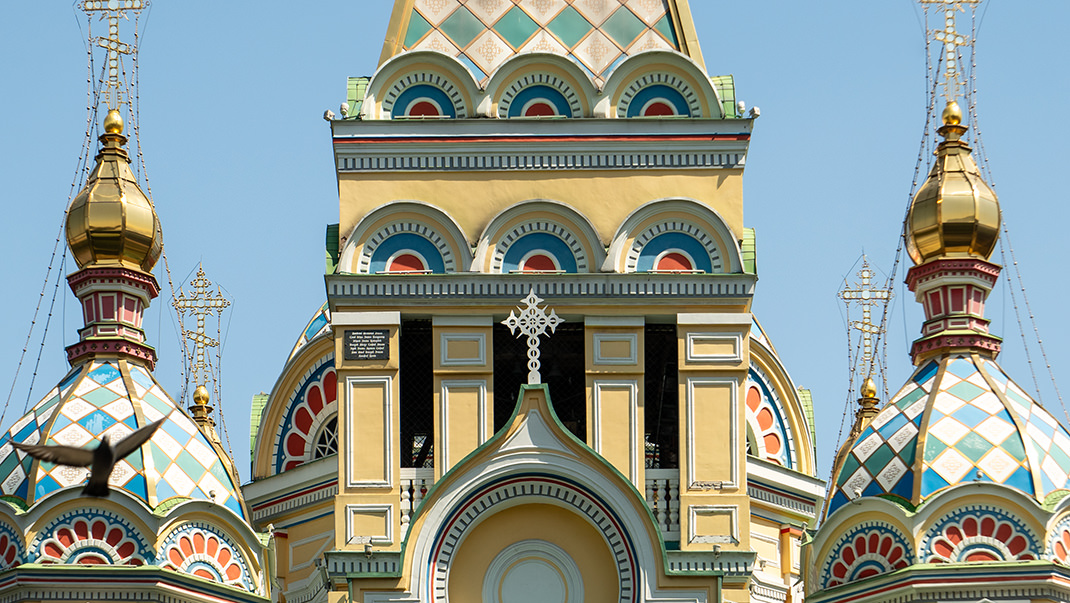
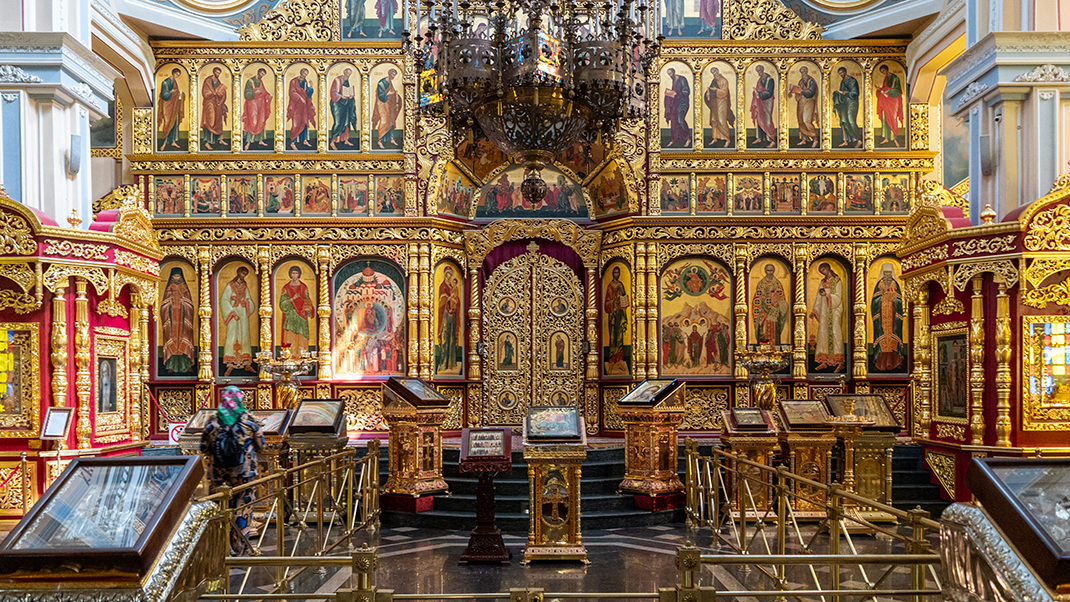
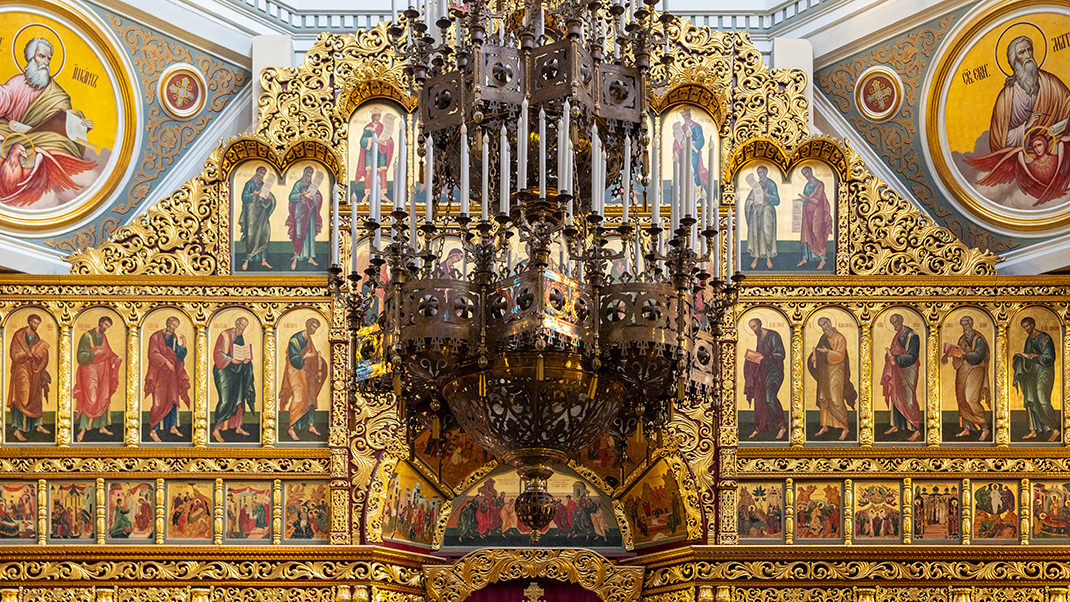
During the Soviet period, the building housed institutions completely unrelated to religion: the Society for the Study of Kazakhstan, the Society of Proletarian Tourism and Excursions, the State Central Museum of Kazakhstan, and the Almaty Museum of History and Restoration. The cathedral’s bell tower was even used to broadcast radio programs. In 1995, the building was returned to the Russian Orthodox Church.
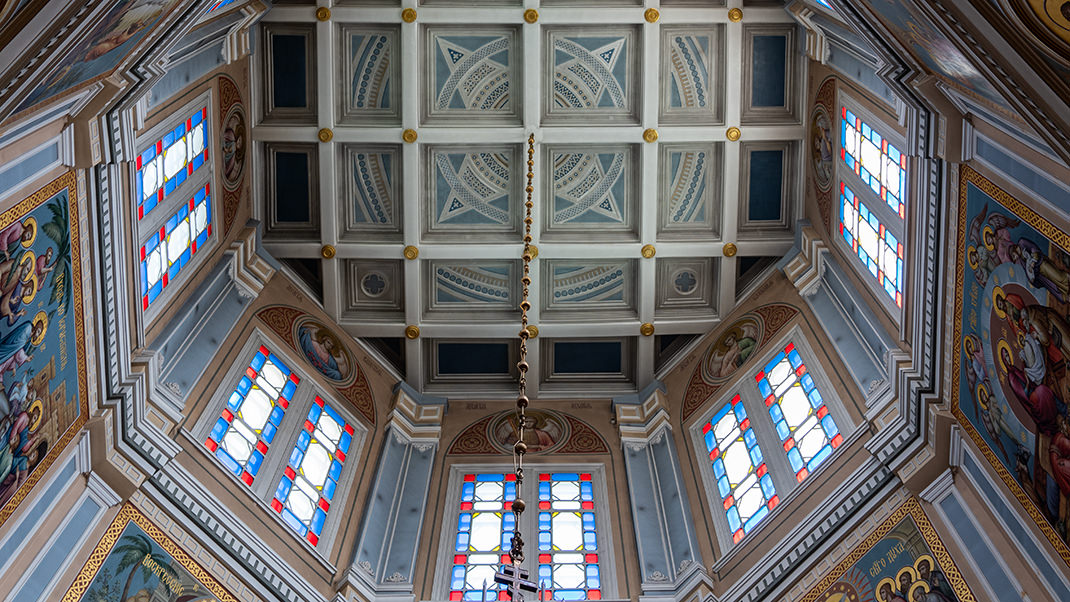
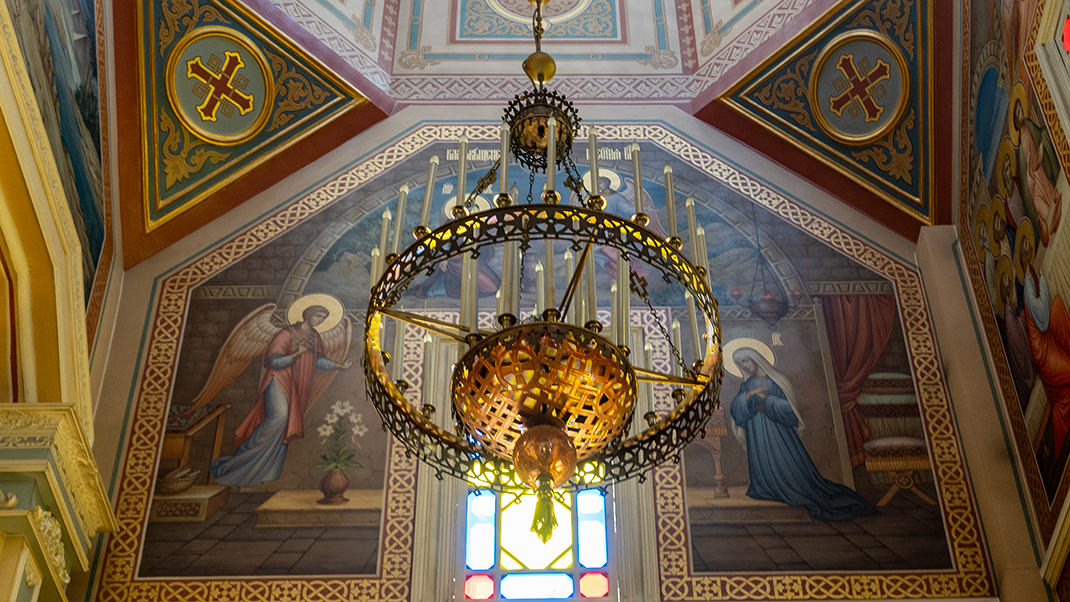
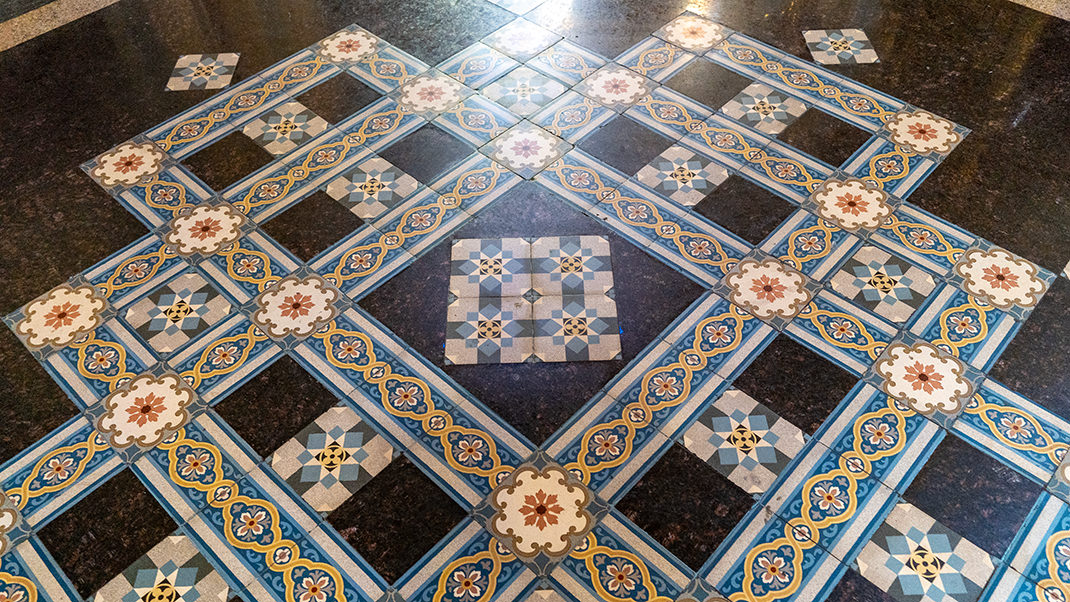
Different sources give varying information about the cathedral’s height: 56 meters, 54 meters, and 46 meters according to the information board near the entrance. The sign also states that this is one of the tallest and largest wooden buildings in the world. I’m not sure where exactly it would rank in such a list. Personally, I immediately thought of the 100-meter-tall Sanctuary of Truth in Pattaya and the Greek Orphanage of Prinkipo on the Princes’ Islands — both are much larger than the Almaty cathedral.
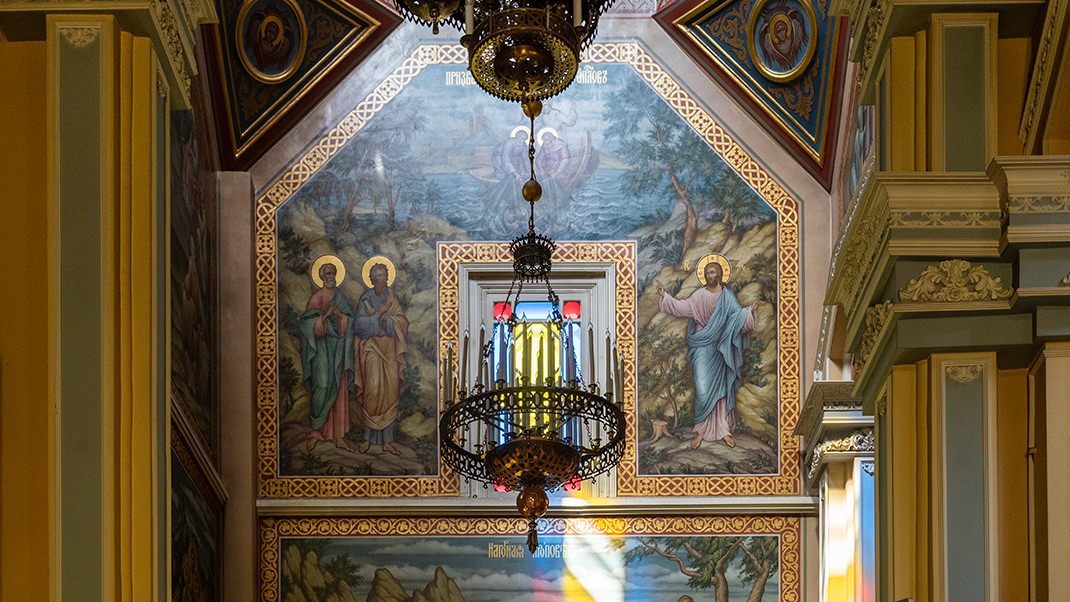
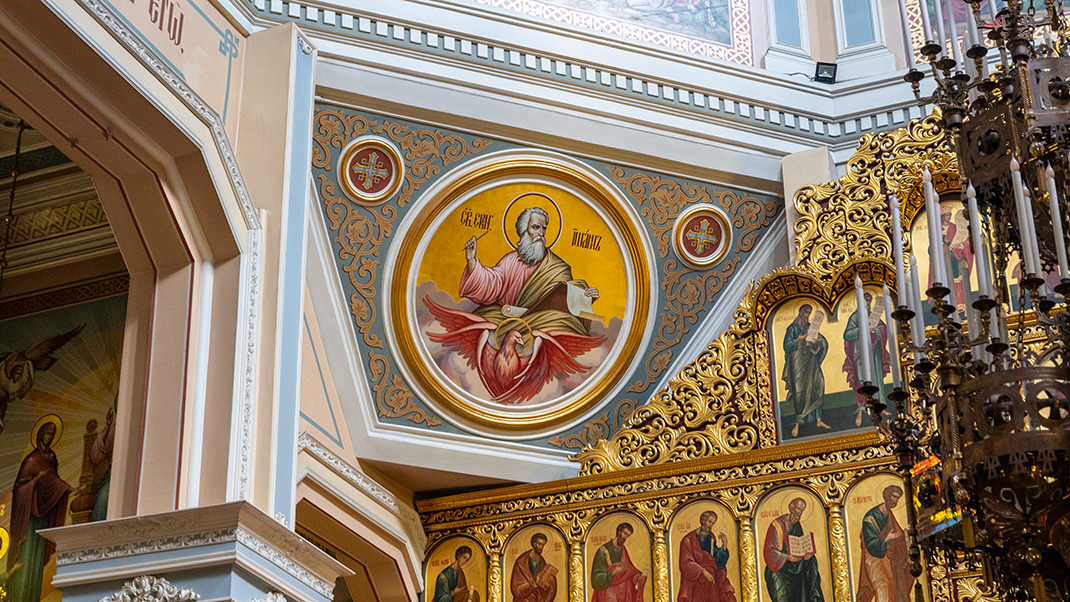
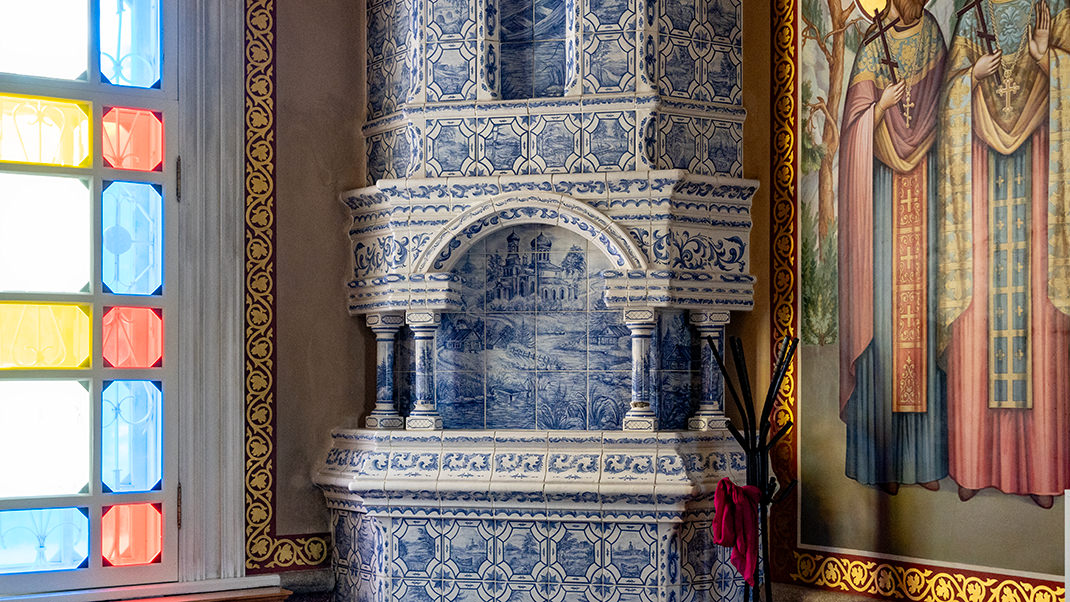
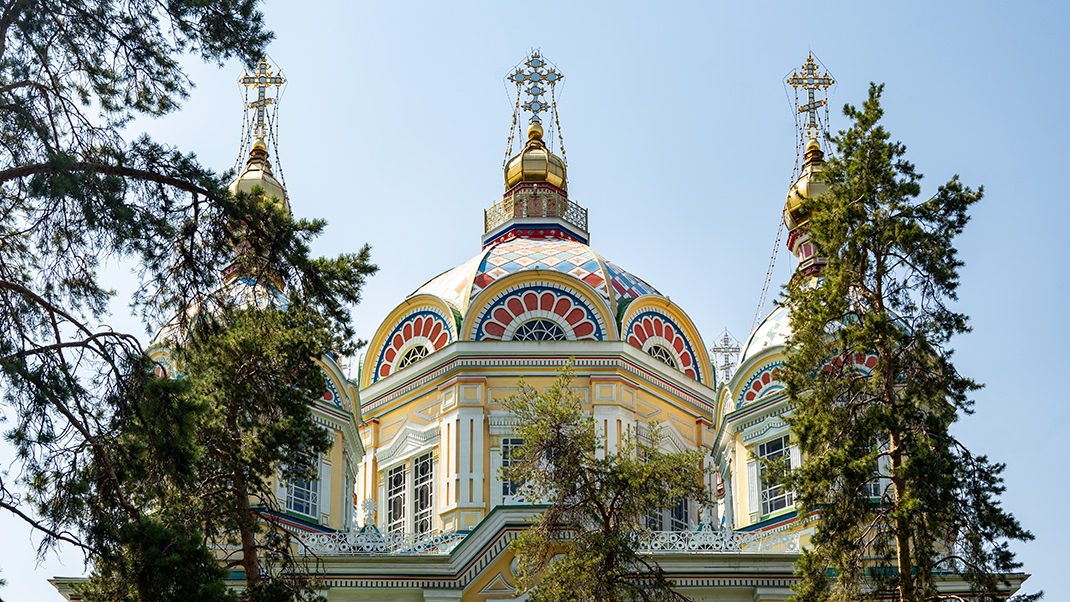
How to Get There by Metro
The cathedral is located in the central part of the city. The nearest metro station is “Zhibek Zholy,” about a 10-minute walk away. Almaty has a single metro line, so it’s hard to get lost. I chose to walk — it’s easy to plan the route using Yandex Maps. The cathedral is open to visitors free of charge.
Next time, I’ll tell you about Botanical Garden in Almaty.
Happy walks!


